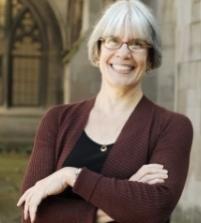Grave Doubt about the "James Ossuary"
"'Jesus box' exposed as fake." This was the headline of a CNN.com story appearing on June 18 (and on the "ticker" of the cable network's Headline News that evening)
"'Jesus box' exposed as fake." This was the headline of a CNN.com story appearing on June 18 (and on the "ticker" of the cable network's Headline News that evening). The director of the Israeli Antiquities Authority (IAA), Shuka Dorfman, had announced the findings of a 12-member panel that, while the "James ossuary" itself is ancient, the inscription on it is a modern fake. The IAA report states that, based upon paleographic and chemical findings, "The letters postdate the patina and cut through it ... The inscription appears new, written in modernity by someone attempting to reproduce ancient characters based on existing examples."
While U.S. news outlets present the results of the IAA's three-month investigation as yet another stage in a "he said/she said" debate over the artifact's authenticity, it is clear that the burden of proof has now shifted onto those who would try to maintain that this ossuary deserves the serious attention of early Christianity scholars. As a follow-up to my earlier Sightings, I would like to identify some essential aspects of this debate which may have been obscured by short-hand and sensational discussion:
1. Lexicon of Legitimacy
The words "authentic" "original" "fake" "forgery" "genuine" "fraud" cannot in principle be used to apply to the entire artifact; nor is a determination about one feature necessarily relevant to or decisive for any or all other elements. The identification of any known historical person with either the names or box in question is not automatic in any case.
The IAA report found that the box is real, in the sense of being an ancient, first-century Judean ossuary, but they concluded that the inscription is a forgery, especially on the grounds of its patina ("weathering deposits"). The patina on the inscription appears to be the product of "tap water heated to a temperature not found in the Judean Hills during the last three thousand years."
2. Genuine Parity of Scholarly Opinion?
Press accounts in the States, in an attempt at balanced reporting, have given equal voice to those who have been promulgating and profiting from the box: the owner of the ossuary, Oded Golan (interviewed on NPR); Hershel Shanks, publisher of Biblical Archaeology Review where the object was published and publicized by him as what "may be the most important find in the history of New Testament archaeology," and Ben Witherington, New Testament scholar at Asbury Seminary and co-author with Shanks of a speedily published book on the ossuary (Harper Collins, spring, 2003). None of these men is an epigrapher, archaeologist, chemist or geologist. Neither am I.
3. The Reason for Rules
Serious New Testament scholars rely on experts to assist their interpretation of archaeological materials. The American Society for Oriental Research (ASOR) in its 1995 "Statement of ASOR Policy on Preservation and Protection of Archaeological Resources" stipulates that "ASOR members should refrain from activities that enhance the commercial value of such artifacts and thus contribute indirectly to the illicit market, for example, publication, authentication, or exhibition." Consequently, the artifact in question was not displayed or discussed at the ASOR meeting in Toronto this past November, but only by the concurrent Society of Biblical Literature, which, controversially, devoted special sessions to it. The Royal Ontario Museum, whose assessment Shanks offers as a counter to that by the IAA, was not chosen as a research facility in ancient epigraphy, but as a local host which would display the object just miles from the SBL meeting.
In an astounding turn of events, it has emerged that the owner of the artifact, Oded Golan, is also the owner and purveyor of a second "discovery" (The "Yoash inscription") published by Shanks' Biblical Archaeology Review, also judged a forgery by the IAA panel in its report last week. The American press has not been as clear as their Israeli and international counterparts that Golan is under police investigation. Whatever the results of the Robbery Prevention Unit's investigation, this dual affair has vindicated the wisdom of the ASOR standards. Scholars should be very cautious about basing serious research on "archaeological findings" of uncertain provenance and entrepreneurial presentation. And non-specialists need not, as my earlier column suggested, be manipulated by interpretive paradigms in which they might not wish to be complicit (such as Christianity Today writer Gordon Govier's lament on the possible disqualification of the box which had "electrified Christians who suddenly had an authentic 2,000-year-old souvenir of the founder of their faith").
4. Sensation Sells
Having begun these sensational discussions, BAR continues to thrive on the controversy it has sponsored. When I accessed their website recently I found, to my shock, an apparent endorsement of the chase: they invite their audience to compete in a contest by creating the most convincing forgery of an ancient inscription. The winner will receive $10,000. Caveat lector.
Author, Margaret M. Mitchell, is Associate Professor of New Testament at the University of Chicago Divinity School and the Chair of the Department of New Testament and Early Christian Literature. Her latest book is The Heavenly Trumpet: John Chrysostom and the Art of Pauline Interpretation (Westminster/John Knox, 2002).


